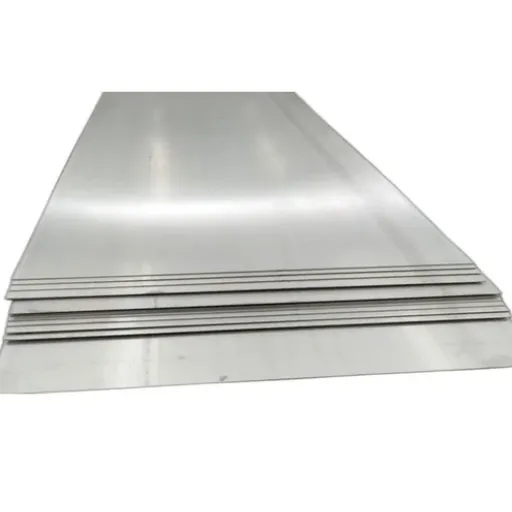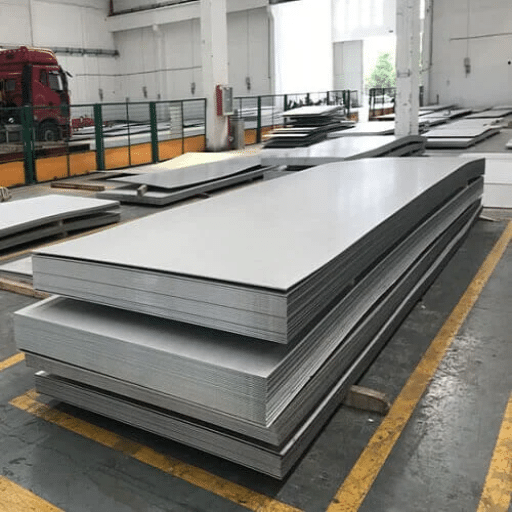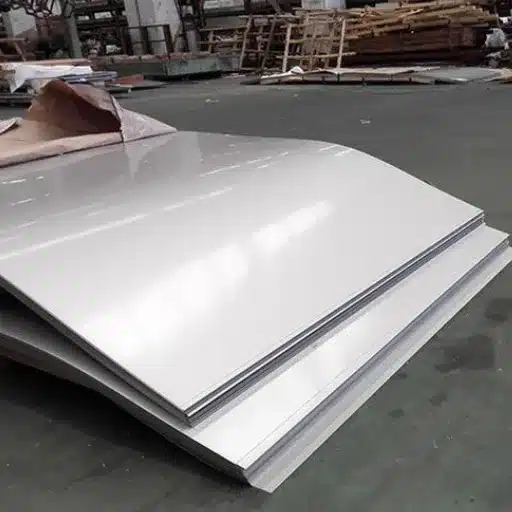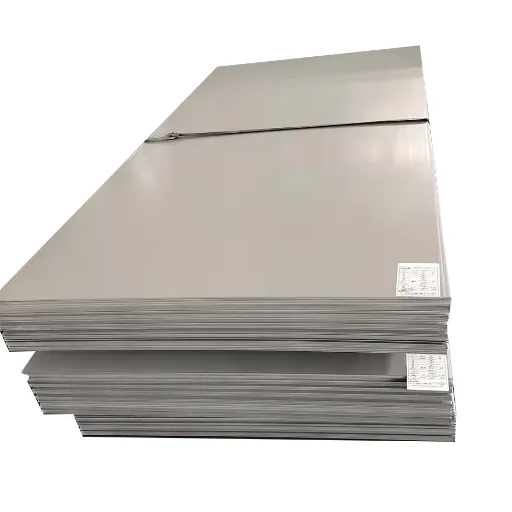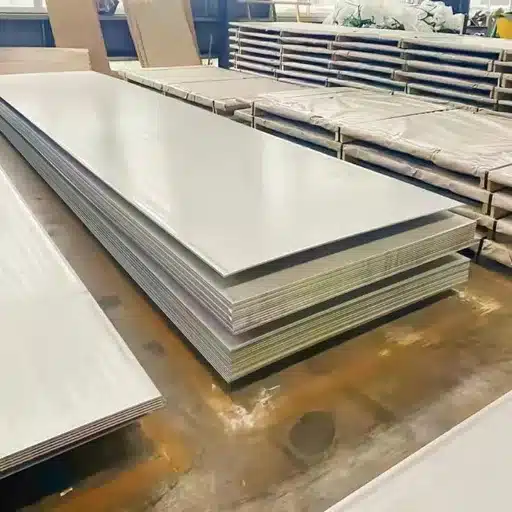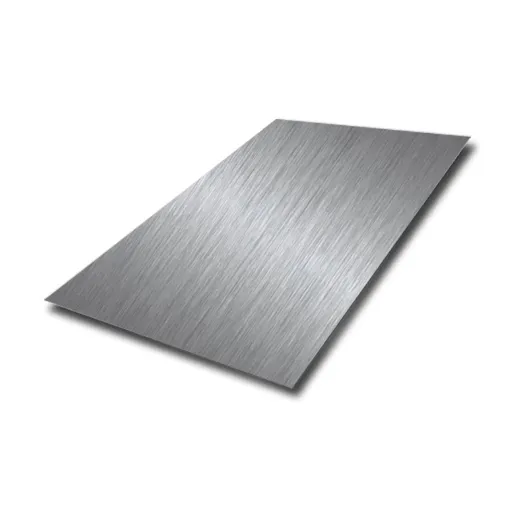Knowing the material’s properties and applications is a prerequisite when choosing a metal for personal, industrial, or commercial uses. These days, titanium steel and stainless steel have become ubiquitous in industries from aerospace to consumer goods due to their astounding and revolutionary strength. While both offer durability and corrosion resistance, different scenarios require different attributes of each of these metals which is influenced by their unique characteristics and cost efficiency. This article outlines the contrasts between titanium steel and stainless steel, their composition, significant attributes, and frequent uses. If you are an engineer, a designer, or even someone passionate with parts of a science such as as materials, this guide will allow you to gain great understanding these versatile metals to make educated choices.
What Are the Main Differences Between Titanium And Stainless Steel?
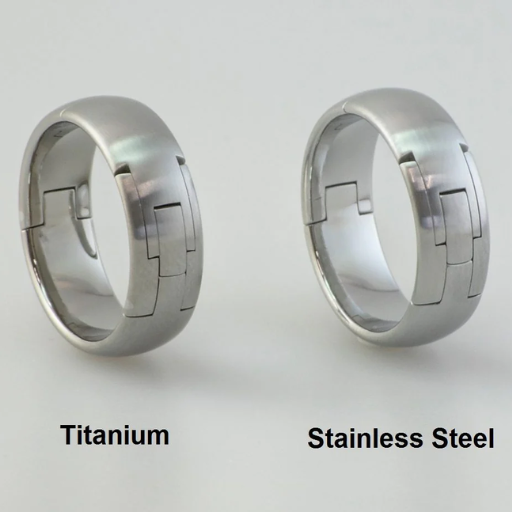
- Composition:
Titanium is known as a pure element which is lightweight, and has a high ratio of strength to weight. In contrast, stainless steel an alloy made mainly of iron, chromium, and other components like nickel which serves as the anti-corrosive agent.
- Strength and Weight:
From an application perspective, titanium is a lot less dense than stainless steel. It is, however, as strong, making it a perfect choice in aerospace, and medical implant sectors where weight savings are critical.
- Corrosion Resistance:
While both materials resist corrosion, titanium far outperforms stainless steel when durably exposed to seawater or harsh chemicals.
- Thermal Resistance:
Stainless steel is better suited for average temperature ranges alongside intense mechanical stress, while extreme heat applications can be surpassed by titanium.
- Cost:
Stainless steel is more economical and commonly utilized in daily use as titanium always comes out as the costlier option because of its complicated extraction and manufacturing processes.
These differences allow all materials to work within specific situations so engineers and designers have the flexibility to choose the best option based on the needs of the application.
Is titanium stronger than stainless steel?
When discussing titanium and stainless steel, their unique mechanical characteristics make them ideal for particular uses. Assessing their strength needs to be done in relation to how they will be used. Right off the bat, titanium wears better because it has a greater strength-to-weight ratio than stainless steel, so it does have exceptional strength, while being a lot easier to carry. Deep within the ground, pure titanium can be extracted with a tensile strength of 430-620 MPa. Some alloys like grade 5 (Ti-6Al-4V) can surpass 1000 MPa. Other grades of stainless steels do not do so badly either, they usually average tensile strength between 485-760 MPa, but the higher grades, such as 17-4 PH stainless steel, can reach around 1100 MPa, but only in certain conditions.
Despite titanium alloys seemingly outperforming stainless steel and other iron alloys, metals such as stainless steel have proven more suited for wear applications with high deformation resistance. Iron alloys also tend to withstand high compressive or shear forces better, giving them practical advantages. Most importantly, the ultimate decision stems from the intended purpose of the material. Mechanical requirements, the environment the material is subjected to, and weight constraints are key criteria to make a decision. The strength and weakness of both materials lies within their hybrid structure and their specific mechanical properties.
What is the corrosion resistance of titanium compared to stainless steel?
Titanium has superior corrosion resistance in stainless steel because of its ability to passively oxidize in these aggressive environments. These forms of titanium dioxide (TiO₂) shields are responsible for metallic protection from corrosive agents, and because of this, titanium is exceedingly resistant to pitting, crevice corrosion, and stress corrosion cracking. This is especially noted in seawater where chloride ions are abundant.
On the contrary, stainless steels, which owe their corrosion resistance to chromium forming a passive oxide layer, are more prone to pitting and concentrated corrosion attack under high salt concentrations or acidic conditions. Take for instance 316 stainless steel; although it is lower than titanium in adaptability and endurance, it has greater corrosion resistance than lower grade 316 and 314 stainless steels which makes it unfit for marine or chemical processing environments. Furthermore, for titanium, many acids, alkalis, and industrial chemicals do not have any effect, which makes the alloy ideal for long-lasting durability in highly corrosive environments. Hence, it can be said that for critical applications where aggressive environments need to be countered, titanium is the most useful metal.
How Do the Alloys of Titanium and Stainless Steel Differ?

Alloy stainless steel and titanium differ in composition, which includes alloys, weight, strength capacity, and corrosion resistance. In demand of these factors titanium is significantly lighter, especially in stainless steel making them attractive for medical implants and greater in aerospace. Stainless steel was more affordable and yielded an increase in strength to covredators compared to titanium, especially after oxidation or saline treatment. The preference between both types relies on environmental surroundings, weight demand, and cost.
What is a titanium alloy?
A titanium alloy is a metal mainly made of titanium blended with some aluminum, vanadium, or molybdenum to improve its mechanical and chemical properties. Like most other alloys, it possesses a unique strength-to-weight ratio, titanium alloys withstand corrosion at high temperatures and offer extreme comparative value to other alloys. Generally, it is placed into three main categorites based on crystal structures: alpha alloys, beta alloys, and alpha-beta alloys. Each type provides tailored characteristics suitable for specific applications. For example, alpha alloys demonstrate excellent performance as compared to other metals in exposure to high-temperature environments while beta alloys have more power in formability and overall strength.
Alloys impact greatly on the medical and aerospace and automotive sectors in the titanium industry. Jet engine parts and airframe structures are made of alloys due to their capability of enduring extreme stress and enduring harsh conditions. Biocompatibility also makes alloys ideal for use in prostheses, implants and surgical instruments. Moreover, iron titanium alloys are important in modern engineering due to emerging changes in the composition by material scientists.
How does titanium steel vs stainless steel differ?
|
Key Point |
Titanium Steel |
Stainless Steel |
|---|---|---|
|
Primary Elements |
Titanium, iron, carbon |
Iron, chromium, nickel, carbon |
|
Typical Alloying Agents |
Aluminum, vanadium, molybdenum |
Manganese, molybdenum, silicon |
|
Density |
Lower (4.5 g/cm³) |
Higher (7.8 g/cm³) |
|
Strength-to-Weight Ratio |
Higher |
Moderate |
|
Corrosion Resistance |
Excellent in seawater, chlorine |
High in most environmental conditions |
|
Thermal Conductivity |
Lower |
Higher |
|
Magnetic Properties |
Non-magnetic |
Some grades are magnetic |
|
Heat Tolerance |
Resistant to high temperatures |
Good, varies by grade |
|
Weldability |
Limited in some grades |
Excellent for most grades |
|
Cost |
Higher |
Lower |
In What Applications is Titanium Preferred Over Stainless Steel?
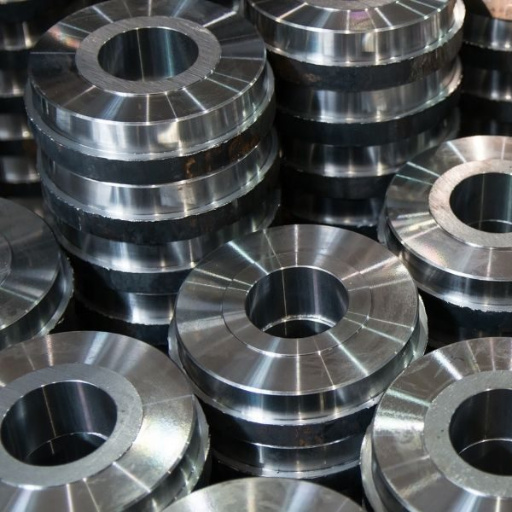
1. Russia and other countries have found a lot of utility to titanium metal. It has also proven to be useful in aerospace industries. It is used for various furnace and jet engine components as well as airframes because of its great strength to weight ratio and heat resistance.
2. It is also widely used in medical implants. Its ease of integration into the human body and resistance to corrosion also makes it a good material for surgical implants and Joint Dental Implants.
3. The other utility of Titanium and its Alloys are for Marine Applications. This includes usage for submarine hardware and in desalting plants. This is due to its unparalleled resistance against corrosion from seawater.
4. This metal and its compounds are also employed in the creation of Aircraft and ships. Their usefulness in these applications stems from their robustness and low weight.
5. Nowadays, titanium and its alloys are being incorporated into medical appliances. What sets them apart is their ease of integration into the human body and their corrosion resistance. This makes them suitable for joint replacements and dental implants surgically.
Where stainless steel might fall short, these applications take advantage of titanium’s unique characteristics.
Where is titanium commonly used in industrial applications?
Titanum is used extensively in several industries because of its use in modern aircraft along, resistance to extreme temperatures, and jet engines with strong weight ratio. Following are its industrial applications in detail.
- Aerospace Industry:
The use of titanium in manufacturing spacecraft, aircraft, and jet engines makes it highly treasured in the aerospace industry. In fact, titanium has a high strength ratio which reduces fuel consumption therefore making it safe and efficient. Research shows that modern aircraft such as The Boeing 787 and Airbus A350, allocate up to 15% of their structural weight to titanium.
- Medical Field:
Titanium is also critical for construction of medical appliances like hip and knee prosthetics, dental implants, and even surgical devices. His property ensures is biocompatible, that is, integrates into the human body without negative effects. Some studies suggest worldwide medical use of titanium is around 1000 metric tons per year.
- Marine Engineering:
In shipbuilding, titanium also has a large number of applications such as in the construction of craft hulls, propeller shafts, and even in desalination plants. Titanium is one of the few materials that seawater scalding and salt water are designed to withstand corrosion from scalding salt water. While steel and aluminum do not preform well, titanium is resistant to corrosion and outperforms them.
- Chemical Production:
Fabricating grade exchange, reaction vessels, and pipe systems is other works titanium takes part in in the chemical processing industry. Furthermore, its cumbersome nature to corrosive chemicals like chlorine and sulfuric acid make it a great choice for these environments. Other industries estimate that about 20% of titanium fabrication is focused on the chemical branch.
These instances highlight how the diverse properties of titanium, along with its materials characteristics, continue to enhance industrial applications and technologies on engineering, manufacturing essentials.
What are the medical applications of titanium?
Because of its biocompatibility, titanium’s corrosive nature, and its high strength to weight ratio, it is extensively utilized in modern medicine. Its applications in the medical field are as follows:
- Orthopedic Implants
Titanium joint replacements are popular, including hip, knee, and shoulder implants. The bonds formed between bone and titanium through osseointegration help maintain the long term stabiility of the prosthetics. A report from the National Institute of Health (NIH) stated that titanium based hip implants have a 95% success rate after 10 years.
- Dental Implants
Implants provided to people who have lost teeth require expert attention and care. The titanium prosthetic dental devices have become immensely popular due to their resilience and resistance to microbial growth.
- Surgical Instruments
Alongside custom hydraulic tools, titanium scalpels, forceps, and retractors stand as examples of surgical instruments made of titanium.
- Cardiovascular Devices
Titanium makes up a crucial part of a pacemaker’s case, heart valves, and defibrillators. Its non-toxic and hypoallergenic characteristics guarantee minimal complications, if any.
Medical-grade titanium has been thoroughly studied and used in numerous clinical settings, confirming its critical role in the evolution of healthcare technology. The advancement of biomedical engineering will only further broaden its application in the future.
What Should You Consider When Choosing Between Titanium and Stainless Steel?
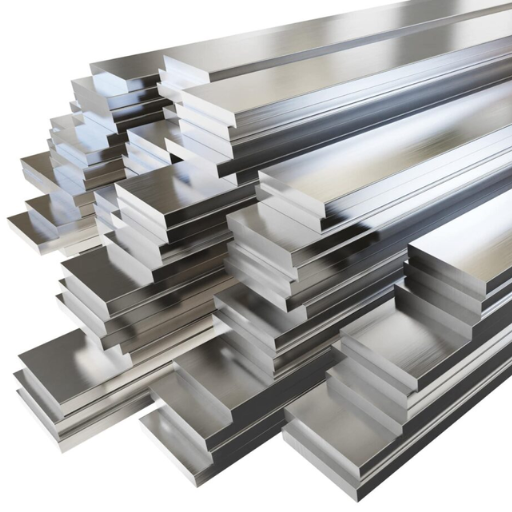
There are a couple of pros and cons pertaining to choosing between it and stainless steel, which one could consider when weighing their options:
- Corrosion Resistance: Titanium is unparalleled when corrosion resistance is compared to both stainless steel, especially in saline conditions, holding up as an implant. While stainless steel might face issues in corrosion, at times it might prove to be useful in less corrosive situations.
- Weight: In areas like medical implants and aerospace, every gram counts. Here, titanium shines again as it weighs much less than stainless steel.
- Strength: They all have high strengths, but titanium is comparatively better since its weight-to-strength ratio is superior. This is beneficial for designs that need high strength materials at a low density.
- Cost: As a result of the raw material and processing titanium incurs, it tends to be more expensive than stainless steel. For budget constrained applications, stainless steel appears to be the better option.
- Biocompatibility: Titanium is biocompatible which is perfect for medical implants. As for stainless steel, while it can be used in medical setups, it contains the risk of nickel which is prone to allergy and not recommended.
Choosing the material is dependent on the factors such as the application’s requirements, the surrounding conditions, the budget, and the environmental factors.
What is the weight difference between titanium and stainless steel?
With a titanium density gauge at 4.5 g/cm³, the metal is significantly lighter than stainless steel which weighs higher 7.5 – 8.0 g/cm³ based on the alloy. This translates into approximately 40 to 45 percent difference with titanium winning the contest estimation. The difference in weight shines best with industries like aerospace, automotive, and medicine. All of these industries need to focus on maintaining and enhancing strength, durability while shedding weight, something titanium helps out with. In general, less weight contributes take lesser energies to physical and in turn increases performance and efficiency.
How do cost and availability affect your decision?
Factors such as cost and availability play a huge role in determining the places where they need to be applied. Even though titanium has good strength-to-weight and corrosion resistance ratios, it tends to be costly compared to aluminum or stainless steel. The high cost is due to the limited supply of titanium globally and the complex extraction and refining processes. On top of these, availability of titanium is also subject to demand from high-priority sectors such as aerospace and defense, geopolitical factors, and mining limitations. These factors require a decisive cost benfit ratio calculation to ensure its use provides value in relation to the cost that is needed to be spent. For low-budget projects, durability and weight limitations aimed at a secondary focus might be relaxed enough that other materials become more advantageous.
How to Maintain Titanium and Stainless Steel Products?
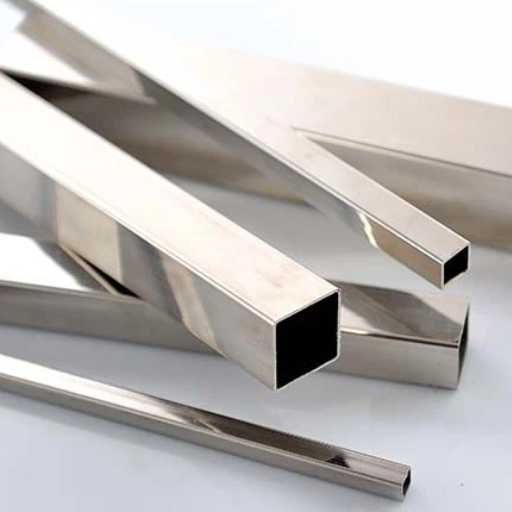
To ensure optimal durability and performance of stainless steel and titanium, proper maintenance is crucial. Adhere to the following steps:
- Cleaning: To soften the accumulation of grease and other debris, use warm, non-abrasive soap. Do not use drugs that contain bleach or chlorine since those can cause long term damage to the surface.
- Inspection: Regularly tailored inspections should be performed looking for scratches and corrosion. Any issues observed should be addressed immediately to avoid further damage.
- Storage: The product should be stored in a dry, well-ventilated area with fresh air circulation to limit exposure to moisture and environmental contaminants. It can also be covered.
- Handling: Take care not to use tools or equipment that may scratch or damage the surface when handling the object. Appropriate padding or barriers should be used during transport.
- Polishing (if applicable): Use a polish dedicated to Titanium or Stainless steel to add an extra layer of protection while keeping the surfaces visually appealing.
By following these actions, the functionality and integrity of stainless steel and titanium tools will be preserved longer as the longevity increases.
What are the best practices for maintaining titanium?
While titanium has a reputation for durability, it requires proper handling and environmental factors for long lasting resilience. Maintenance is very critical as titanium’s corrosion resistant strength is significantly lowered without the right care.
- Regular Cleaning: Use a soft cloth with mild soap and warm water to clean titanium surfaces regularly. Do not use abrasives or harsh cleaners as they damage the protective oxide layer and increase vulnerability to corrosion.
- Proper Storage: Be sure to keep titanium products in a dry area with controlled temperatures. Humid or corrosive environments may weaken the material over time, especially in the presence of salt.
- Avoid Mechanical Damage: Take care to avoid scratching or creating dents that would weaken the structure of the item. Remove the item from padded protective storage only during the required handling. This minimizes the risk of damaging the item.
- Passivation Maintenance: Inspections for signs of wear should always be conducted despite the fact that titanium naturally forms passivation layers which protect it from corrosion. For medical or aerospace use, tailored techniques may be used to further enhance protective properties.
Following these protocols will allow for titanium products to maintain their strength and durability, and even their aesthetic features, thus optimizing the functional performance and longevity.
What maintenance tips ensure longevity for both titanium and stainless steel?
- Regular Cleaning
Regular cleaning is required for both titanium and stainless steel to avoid the build-up of dirt and corrosive grime. In most cases, a mild detergent coupled with warm water will be effective. Research shows that, in industrial or marine environments, cleaning at least bi-weekly can reduce corrosion by up to 25%.
- Avoid Abrasive Materials
Steel wool and stiff brushes are best saved for something other than cleaning during maintenance, as they will not only scratch the surface but will also reduce corrosion resistance. The protective oxide layer of the material will be preserved by soft cloths or sponges that are non-abrasive.
- Inspect for Damage
Worn, cracked, or other mechanical damages should be inspected regularly. Microfractures or other surface imperfections, especially in high-stress conditions, will lose structural integrity over time.
- Passivation Processes (When Applicable)
Passivation is important for stainless steel and in some applications is advised for titanium. This treatment enhances the protective oxide layer which helps in oxidation and the formation of rust. Controlled processes of passivation can increase the life span of the stainless steel parts by as much as 30% in harsh conditions.
Following these meticulous techniques will ensure that the precision maintenance boosts the performance and dependability of titanium and stainless steel parts, enabling reliable operation in various rigorous conditions.
Reference Sources
-
A systematic review of the use of titanium versus stainless steel – This study compares the stiffness and load absorption of titanium and stainless steel implants.
-
Titanium vs. Stainless Steel: Choosing the Right Material – A detailed comparison of the key differences, physical properties, and applications of both materials.
-
Titanium Steel vs Stainless Steel: Know the Difference – Highlights the advantages and disadvantages of titanium steel and stainless steel in terms of weight, corrosion resistance, and cost.
Frequently Asked Questions (FAQs)
Q: What are the main differences between titanium vs stainless steel?
A: The main differences between titanium vs stainless steel include their composition, weight, corrosion resistance, and strength. Titanium is a transition metal known for its excellent corrosion resistance and strength-to-weight ratio, while stainless steel is an alloy primarily made of iron, chromium, and other elements, offering good corrosion resistance but generally being heavier than titanium.
Q: Is titanium or stainless steel better for outdoor applications?
A: Titanium is often considered better than stainless steel for outdoor applications due to its superior resistance to corrosion, especially in harsh environments. However, stainless steel is also widely used in outdoor settings, particularly austenitic stainless steel which offers good corrosion resistance.
Q: What are the pros and cons of titanium?
A: The pros of titanium include its excellent corrosion resistance, lightweight nature, and high strength. The cons include its higher cost compared to stainless steel and the challenges in machining titanium due to its toughness.
Q: How does stainless steel and titanium compare in terms of strength?
A: Titanium vs stainless steel in terms of strength shows that titanium is generally stronger than steel when considering weight. However, specific grades of stainless steel, such as martensitic stainless steel, can provide comparable strength in certain applications.
Q: Which is more affordable, stainless steel vs titanium?
A: Stainless steel is generally more affordable than titanium. The cost of titanium and titanium alloys is higher due to the complex extraction and processing methods involved in their production.
Q: What types of stainless steel are commonly used compared to titanium?
A: Common types of stainless steel include 304 stainless, austenitic stainless, ferritic stainless, and duplex stainless steel. Each type has unique properties suited for various applications, while titanium and titanium alloys are used in specific high-performance scenarios.
Q: Can you explain the difference between stainless steel’s and titanium’s corrosion resistance?
A: Titanium has excellent corrosion resistance in both acidic and alkaline environments, making it superior to stainless steel in many cases. Stainless steel is resistant to corrosion but may suffer from pitting and crevice corrosion in certain conditions, especially if not properly alloyed.
Q: In what applications is titanium preferred over stainless steel?
A: Titanium is preferred in applications where weight savings, strength, and corrosion resistance are critical, such as in aerospace, medical implants, and marine environments. Stainless steel is widely used in construction, kitchenware, and automotive applications where cost and ease of fabrication are important.
Q: Are there instances where stainless steel is better than titanium?
A: Yes, there are instances where stainless steel is better than titanium, particularly when cost is a primary concern, or when the application does not require the extreme corrosion resistance or weight savings that titanium offers. Additionally, stainless steel’s machinability can make it more suitable for certain manufacturing processes.

